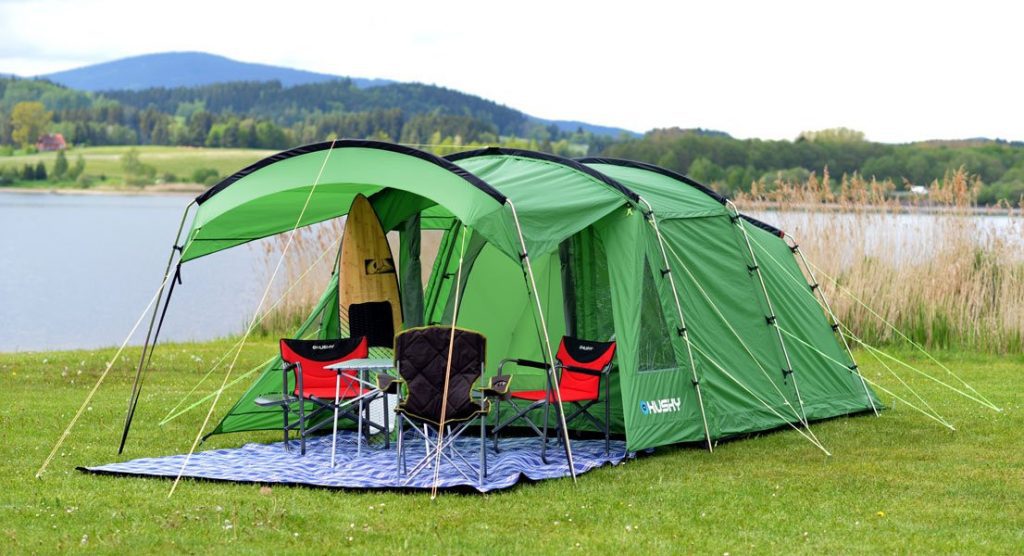The term “camping” can indicate a variety of things, based on who is going on the adventure. From a fancy RV parked beside the highway at a campsite to a single hiker having their cup of coffee in a bivy sack by a hidden alpine lake, camping has different forms.
It’s fine if we have our own views about how to enjoy a calm break in the great outdoors. Here’s some information to assist you to sort through your best camping shelter alternatives and selecting which style of camper you would like to be.
Wall Tents
Wall camping shelters are heavy and bulky, but they offer a true home-away-from-home experience. They’re a favorite among forest guides because they have features that many other tents lack, such as the capacity to stand sturdy, enough area for tables and cots, and the capacity to access a wood-burning stove when the weather becomes cold. Because this isn’t a shelter you’ll be dragging on your back, plan to camp nearby your vehicle or move it deeper into the backcountry using horses or ATVs.
Single Wall Tents
Single wall shelters for camping provide better protection than tarp shelters, but they are also heavier. Single wall tents are near twice the weight of a normal tarp setup, which weighs less than or equal to a pound. A waterproof bottom and a ventilated upper canopy make up these tents. Single wall tents are popular among mountain climbers and alpinists because of their minimal weight, complete weather coverage, and installation from the inside. A single-wall tent can set you back just a fair coin.
Double Wall Tents
Double-wall camping shelters are quite common in campsites around the country. They are composed of a self-supporting frame with an inner wall and a separate protective rain flap on top. Double-wall tents are available in a variety of sizes and shapes, ranging from small single-man tents to ten-men shelters for camping. They’re ideal for car camping with children and/or dogs because they provide complete protection from the outdoor elements. However, unless you’re going backpacking in the cold season, their weight makes them a poor choice for backpacking shelters.
Bivy Sacks
A bivy sack is essentially a waterproof and ventilated sleeping bag cover. It’s a little tent-like covering that covers your head. One major benefit of bivy sacks is their minimal weight. Since you can unroll your sack and rest under the sky, they also allow you to connect with nature. However, when the weather condition is extreme, it is better to look for some other camping shelter as a bivy sack will not protect your belongings.
Tarp Shelters
Tarp shelters for camping are yet another compact shelter option that can come in handy if you’re carrying your campsite over greater distances. They’re a little heavier than bivies, but they provide additional protection from the weather. Tarp shelters also have the benefit of being able to be deployed in a variety of structures based on the weather and season. They can also be used along with bivy sacks to expand their functionality. However, remember that tarp shelters provide very little warmth and little bug protection.
Fifth Wheel Campers and Pull Behind Campers
If your adventures take you down on highways, a camper could be the perfect refuge for you. Many of these camping shelters come with suitable sleeping and eating chambers, as well as a burner, maybe an oven, sink and toilet, and even a shower, all this with weatherproof protection. A camper will keep you connected to on-road locations, as previously stated. However, these shelters are costly. So invest only if they are in your budget and you need them.
How to Choose the One for You?
There are so many camping shelter options that choosing one may be difficult. Here are some pointers that can help you:
- Seasons: Most tents are suitable for the season and maybe labeled as such. There are two-season (mostly summer), three-season (spring, summer, and autumn), and four-season tents available, all of which are aimed at keeping you safe and secure in the worst weather, even snowstorms.
- Type of Camping: Recreational campers are likely to choose a shelter with enough space, breathability for summer use, and no significant weight problems while others have different requirements.
- Backcountry camping: When selecting a tent, people camping in areas where they can experience more diverse weather patterns for longer trips, or simply take more frequent camping trips in the spring and autumn must consider a variety of other factors such as weight, layout, and durability.
True, tent styles have progressed significantly over time. The most crucial aspect of selecting a tent is determining its size and compatibility for the conditions in which a person will be camping.
We’ve provided basic guidance above, but you’ll discover that a tent is a combination of hooped and dome or something dependent on its pole arrangement, making the design term less relevant than the intended function. Hopefully, the advice we’ve given has assisted you in determining which camping tent styles are best for you. Also you can check detailed information about each tent on Happier Camping.
- Best Camping Sites In India - May 28, 2023
- 10 Essential Items For A Comfortable Camping Trip - May 4, 2023
- The Best Camping Tents For Families - May 4, 2023

